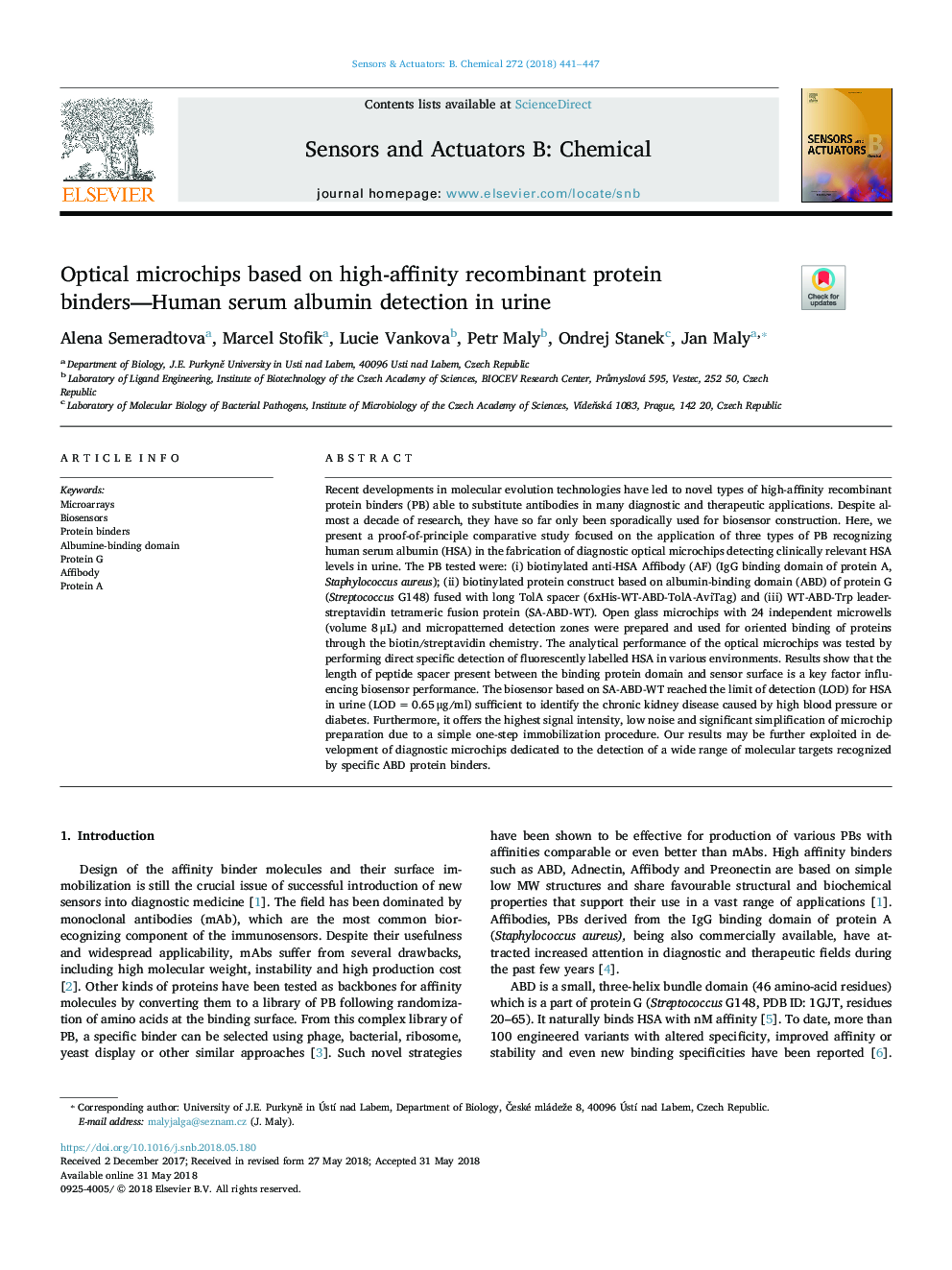| کد مقاله | کد نشریه | سال انتشار | مقاله انگلیسی | نسخه تمام متن |
|---|---|---|---|---|
| 7138935 | 1462017 | 2018 | 7 صفحه PDF | دانلود رایگان |
عنوان انگلیسی مقاله ISI
Optical microchips based on high-affinity recombinant protein binders-Human serum albumin detection in urine
ترجمه فارسی عنوان
ریزپردازنده های نوری بر اساس پیوند های پروتئینی نوترکیب با محتوای بالا - تشخیص آلبومین سرم انسان در ادرار
دانلود مقاله + سفارش ترجمه
دانلود مقاله ISI انگلیسی
رایگان برای ایرانیان
کلمات کلیدی
موضوعات مرتبط
مهندسی و علوم پایه
شیمی
شیمی آنالیزی یا شیمی تجزیه
چکیده انگلیسی
Recent developments in molecular evolution technologies have led to novel types of high-affinity recombinant protein binders (PB) able to substitute antibodies in many diagnostic and therapeutic applications. Despite almost a decade of research, they have so far only been sporadically used for biosensor construction. Here, we present a proof-of-principle comparative study focused on the application of three types of PB recognizing human serum albumin (HSA) in the fabrication of diagnostic optical microchips detecting clinically relevant HSA levels in urine. The PB tested were: (i) biotinylated anti-HSA Affibody (AF) (IgG binding domain of protein A, Staphylococcus aureus); (ii) biotinylated protein construct based on albumin-binding domain (ABD) of protein G (Streptococcus G148) fused with long TolA spacer (6xHis-WT-ABD-TolA-AviTag) and (iii) WT-ABD-Trp leader-streptavidin tetrameric fusion protein (SA-ABD-WT). Open glass microchips with 24 independent microwells (volume 8â¯Î¼L) and micropatterned detection zones were prepared and used for oriented binding of proteins through the biotin/streptavidin chemistry. The analytical performance of the optical microchips was tested by performing direct specific detection of fluorescently labelled HSA in various environments. Results show that the length of peptide spacer present between the binding protein domain and sensor surface is a key factor influencing biosensor performance. The biosensor based on SA-ABD-WT reached the limit of detection (LOD) for HSA in urine (LODâ¯=â¯0.65â¯Î¼g/ml) sufficient to identify the chronic kidney disease caused by high blood pressure or diabetes. Furthermore, it offers the highest signal intensity, low noise and significant simplification of microchip preparation due to a simple one-step immobilization procedure. Our results may be further exploited in development of diagnostic microchips dedicated to the detection of a wide range of molecular targets recognized by specific ABD protein binders.
ناشر
Database: Elsevier - ScienceDirect (ساینس دایرکت)
Journal: Sensors and Actuators B: Chemical - Volume 272, 1 November 2018, Pages 441-447
Journal: Sensors and Actuators B: Chemical - Volume 272, 1 November 2018, Pages 441-447
نویسندگان
Alena Semeradtova, Marcel Stofik, Lucie Vankova, Petr Maly, Ondrej Stanek, Jan Maly,
